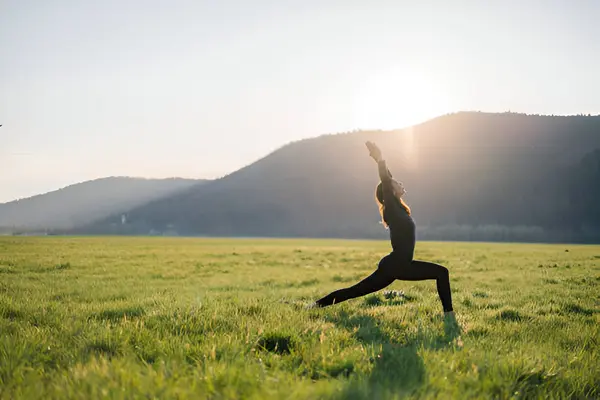What mental benefits does yoga offer?
Yoga is a deeply mental activity, promoting relaxation and the alleviation of stress. Through breathing and meditation, yoga calms the nervous system and diminishes cortisol levels ' the stress hormone. This way, it helps in managing anxiety and depression, and one will experience a feeling of peace. Yoga encourages mindfulness; that is, it enhances focus and concentration. It also develops self-awareness and emotional stability, letting you respond to life's challenges with a clear mind. With daily practice of yoga, you also develop a healthy mind for dealing with the hardships of life.

Why is professional guidance necessary in yoga?
Yoga requires professional guidance because it helps you to practice safely and with the best results. Instructors are well-trained in anatomy, physiology, and all the techniques of yoga. They are able to detect and rectify misaligned positions, which prevent injuries. They would also help individualize practices according to individual needs, taking health concerns and physical restrictions into consideration. Furthermore, instructors provide motivation and structure that helps one to be committed to their practice. They have much information about the philosophy and history related to yoga, making your experience fulfilling. Without professional guidance, one can easily fall into developing bad habits or completely missing the depth within yoga.
What role does a yoga instructor play in injury prevention?
A yoga instructor will help you greatly in preventing injuries by practicing with proper alignment and using the right technique. They look out for wrong postures and adjust them to avoid strain or injury. Instructors also include modifications in poses that may be too difficult or risky based on one's level of fitness or pre-existing health conditions. They teach you to pay attention to your body and notice your limitations and thus provide a safe atmosphere for practice. With their expertise, you avoid common pitfalls and develop a very mindful approach to your practice, very much minimizing the chance for injuries.
Can yoga help with weight loss, or is it just for relaxation?
That's a great question, and a lot of people are probably wondering the same thing. The truth? Yoga can help you lose weight, but it does it from the inside out. Yoga doesn't yell at your body like intensive cardio or HIIT does. It whispers, gently balancing hormones, helping with digestion, lowering emotional eating, and making you more aware.
Some types of yoga, like Vinyasa, Ashtanga, or Power Yoga , can really get your heart rate up and help you lose weight. But here's the secret: the more you practice, the more you learn to listen to your body. You start to want foods that are good for you, not bad for you. You move because you want to, not because you feel bad.
"Yoga doesn't just change your body. It changes your relationship with your body."
Yoga Style | Calorie Burn (Avg/Hour) | Best For |
Vinyasa Flow | 400 - 500 kcal | Active weight loss |
Power Yoga | 500 - 600 kcal | Strength & fat burn combo |
Hatha Yoga | 150 - 200 kcal | Mindful movement & toning |
So yes-yoga helps you shed what doesn't serve you. And sometimes, that's pounds. But often, it's also stress, shame, and self-doubt.
How does breathing (pranayama) fit into yoga-and why is it so powerful?
Ever notice how your breath changes when you're anxious? Shallow. Fast. Tight. Now flip it-how it feels when you're calm? Long. Deep. Free.
That's the magic of pranayama -the ancient yogic science of breath control. It's not just a side dish to yoga poses; it's themain coursefor your nervous system.
Breathing practices like Nadi Shodhana (alternate nostril) or Kapalabhati (breath of fire) do more than oxygenate your body. They:
- Lower cortisol (stress hormone)
- Boost energy and focus
- Clear mental fog
- Calm emotional storms
Important Note: If you're new to pranayama, start slow. Breath is powerful-respect it like fire. A few minutes each morning can set the tone for your entire day.
"The mind is the king of the senses, but the breath is the king of the mind."-B.K.S. Iyengar
What's the difference between yoga and stretching? Aren't they the same?
Oh, the classic mistake! Yoga and stretching may look the same at first glance because they both entail moving your body into certain forms. But if you look a little further, you'll see a huge difference.
Most of the time, stretching is physical . You focus on a muscle, hold it, and hope it gets longer. It's straight, works, and is fantastic for your health.
On the other hand, yoga has several sides. It does stretch your muscles, but it also stretches your mind, patience, breath, and soul. The breath is an important part of a yoga pose. Without a plan. Without being there.
Feature | Stretching | Yoga |
Focus | Physical flexibility | Mind-body connection |
Breath Awareness | Rarely included | Essential in every movement |
Emotional Impact | Minimal | Deep, often transformative |
Spiritual Element | None | Foundational in most styles |
Stretching is what you do to your body. Yoga is what you do with your body, your mind, and your breath.
So no-they're not the same. But they can both have a place in your life.
 Vile Parle East , Bamanwada,chakakla , mumbai, Maharastra, IndiaI am Vishal Rathod, I am a runner. Currently I provide coaching at Prabodhankar Thackeray Sports Complex. And I provide yoga and marathon training in ...
Vile Parle East , Bamanwada,chakakla , mumbai, Maharastra, IndiaI am Vishal Rathod, I am a runner. Currently I provide coaching at Prabodhankar Thackeray Sports Complex. And I provide yoga and marathon training in ...

